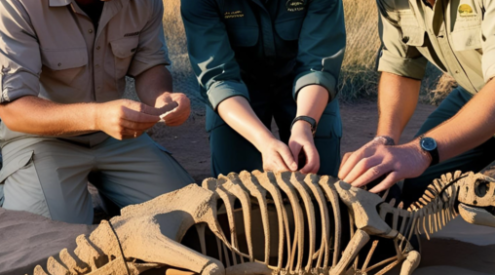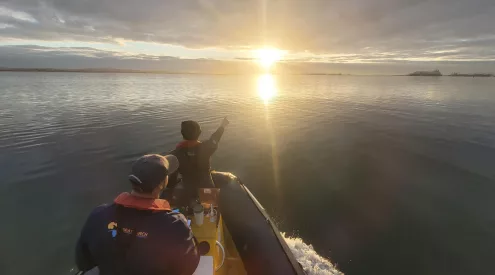Every two years the World Wildlife Fund releases its Living Planet Report, which gives us an idea of the state of global biodiversity. This year’s report is a slap in the face of unsustainable human consumption. We picked six points for you to consider. Find the full report here, including some positive outlooks for the future.

The Panda is the WWF’s iconic poster-boy for threatened nature. The Living Planet Report shows us they’re not the only ones in trouble. Photo by Ted Abbott.
Also read: 10 endangered animals in South Africa and how you can help
1. More than half the world’s vertebrate population has vanished in 40 years
The report shows that populations of non-human vertebrate species around the world declined 52% between 1970 and 2010. This is based on analysis of trends in 10 380 different populations of 3 038 species of mammals, birds, fish, reptiles and amphibians. Interestingly, there are slightly more populations which are increasing in numbers than those in decline, but the extent of the decline in those populations which are getting smaller, is much more significant than that of the growth, resulting in an overall reduction in populations.
The good news: land-based protected areas have a notable positive impact, with a decrease of 18%, less than half the overall rate of decline in terrestrial zones.
2. Fresh water life is getting hammered the hardest
With the sheer number of fish people are pulling out of the sea, you might think that marine populations were decreasing at the highest rate. You’d be wrong. Populations of vertebrates living in freshwater have decreased by 76% since 1970, in comparison to the 39% decrease in both terrestrial and marine species.
Although conservation in freshwater systems presents more challenges than on land, there are initiatives which are having a positive impact. One such initiative, highlighted in the Living Planet Report’s look at positive developments around the world, is South Africa’s own Mondi Wetlands Programme, which has made a big difference to wetland conservation since its launch in 1991.
3. We’re basically the cause of all this
The single most recorded major cause of decline in populations was exploitation by humans, cited in 37% of cases. This is both intentional exploitation, in the form of fishing and hunting, and unintentional, for example the by-catch of fisheries. Habitat degradation is a close second, cited in 31% of cases, with complete habitat loss being a cause in 13%.
4. There’s trouble in the tropics
Populations in tropical areas have declined 56% since 1970, while those in temperate areas have declined a less dramatic, but still alarming 36%. This is consistent with the particularly drastic decline of populations in central and south America, where an average decline of 83% of terrestrial and freshwater vertebrate life has been recorded. The situation is second-most dire in the indo-pacific region, with a 67% decline.
Sub-Saharan Africa is doing relatively well in comparison, with an average decline of 19% and significant increases in populations of certain bird and fish species.
5. Our current demands on nature outstrip the earth’s capacity by a half
It would take one and a half earths to sustainably accommodate human demand, which includes renewable resources we consume (for fuel and food), the land we inhabit, and the forests needed to absorb the carbon we churn out. At our current rate we simply take far more than the earth has to give, and create waste at a far higher rate than that at which the earth can recycle it.
6. High income countries effectively outsource biodiversity loss
High income countries have an average biodiversity increase of 10%, while middle income countries have an average decrease of 18%, and those classified as low-income face a 58% decrease. This may be due to the availability of resources for high-income countries to allocate to conservation and restoration of resources. Importantly, however, the per capita use of ecological resources in high income countries is about five times higher than that of people living in low income countries. This results in rich countries relying on the bio-capacity of poor countries to meet their consumption demands, effectively outsourcing the resultant damage to ecosystems.
if you’re feeling a little freaked out, visit the WWF’s website to find out how you can help by living with a smaller footprint, or supporting them as an organisation. Alternatively check out their Just Coz page to find out how you can help spread awareness through social networks.


















